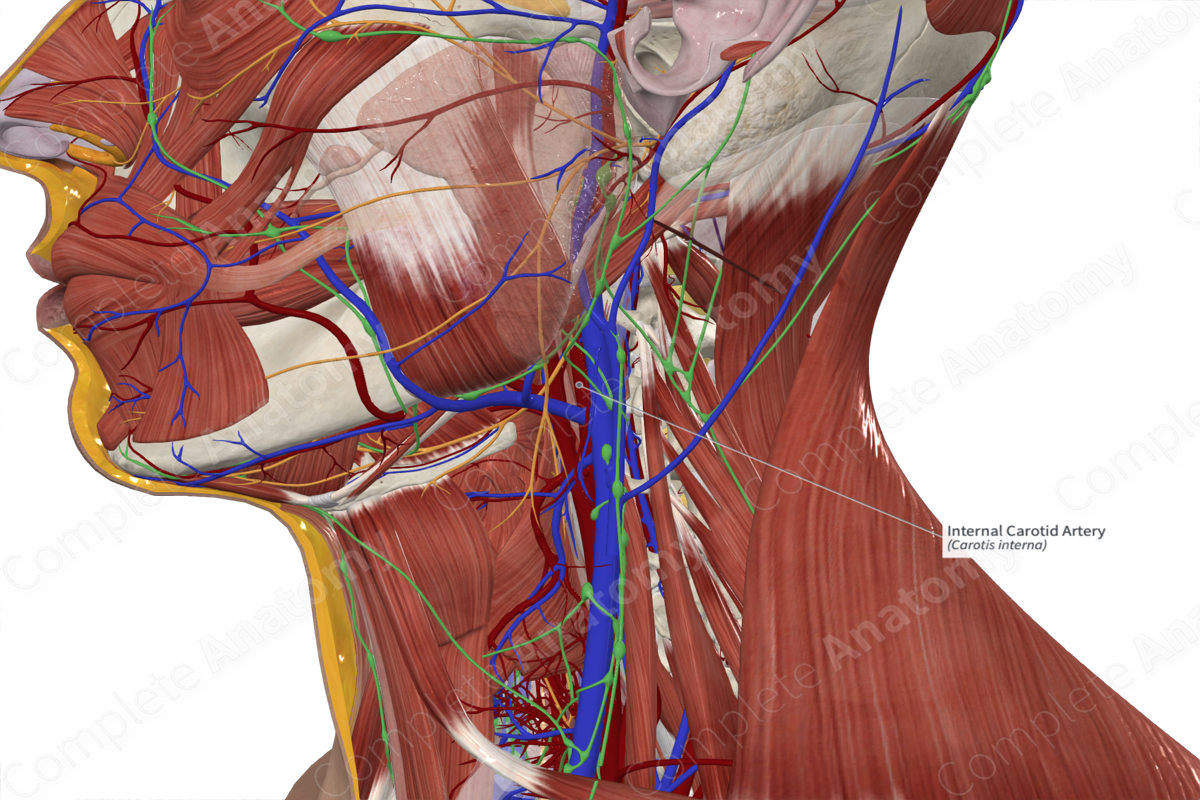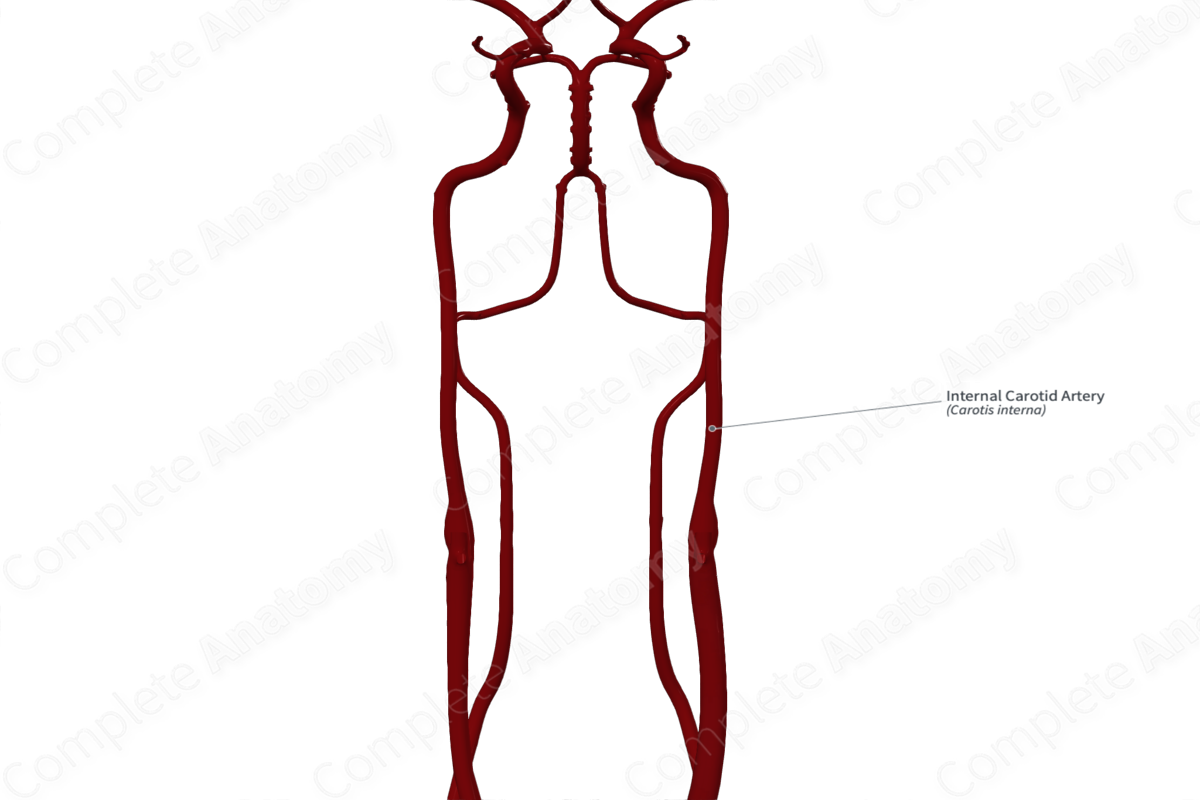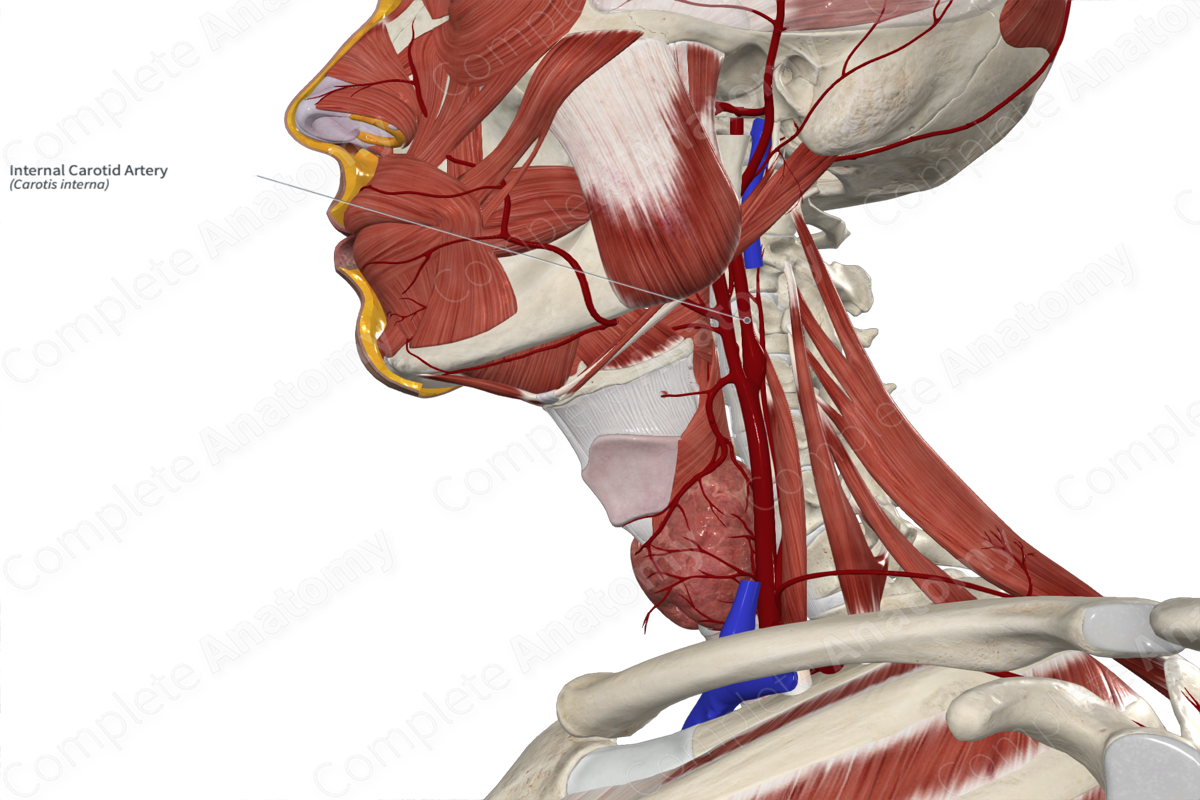
Quick Facts
Origin: Common carotid artery.
Course: Travels superiorly to the base of the skull, passes through the carotid canal to enter the cranial cavity, ends at the base of the brain by dividing into anterior and middle cerebral arteries.
Branches: Carotidotympanic, superior and inferior hypophyseal, ophthalmic, posterior communicating, anterior choroidal, uncal, and anterior and middle cerebral arteries; Cavernous, tentorial basal, tentorial marginal, and meningeal branches; Branches to nerves.
Supplied Structures: Structures of the interior of the cranium (including the brain and pituitary gland) and the orbit.
Related parts of the anatomy
Origin
The internal carotid artery is one of the two terminal branches of the common carotid artery, the other being the external carotid artery. It branches from the common carotid artery at approximately the level of the upper border of the thyroid cartilage.
Course
The internal carotid artery travels superiorly to the base of the skull, where it passes through the carotid canal to enter the cranial cavity. It ends at the base of the brain by dividing into its two terminal branches; these are the anterior and middle cerebral arteries. The internal carotid artery has four parts.
- The first part is the cervical part. This is the part of the internal carotid artery that travels superiorly from the bifurcation of the common carotid artery to the base of the skull.
- The second part is the petrous part. This is the part of the internal carotid artery that travels through the petrous part of the temporal bone via the carotid canal. It exits the carotid canal via the foramen lacerum.
- The third part is the cavernous part. This is the part of the internal carotid artery that travels through the cavernous sinus.
- The fourth part is the cerebral part. This is the part of the internal carotid artery situated at the base of the brain.
Branches
The internal carotid artery has four parts as described above. The cervical part gives off no arterial branches. The petrous part gives off the carotidotympanic arteries. The cavernous part gives off the inferior hypophyseal artery, as well as the cavernous, tentorial basal, and tentorial marginal branches. The cerebral part branches the ophthalmic, superior hypophyseal, posterior communicating, anterior choroidal, uncal, anterior cerebral, and middle cerebral arteries, as well as meningeal branches.
Supplied Structures
Overall, the internal carotid artery and its branches provide an arterial supply to the structures of the interior of the cranium (including the brain and pituitary gland) and the orbit.
Learn more about this topic from other Elsevier products
Internal Carotid Artery

Involvement of the ICA is often adjacent to the level of the second cervical vertebra, and frequently spares the proximal segment of the vessel.




